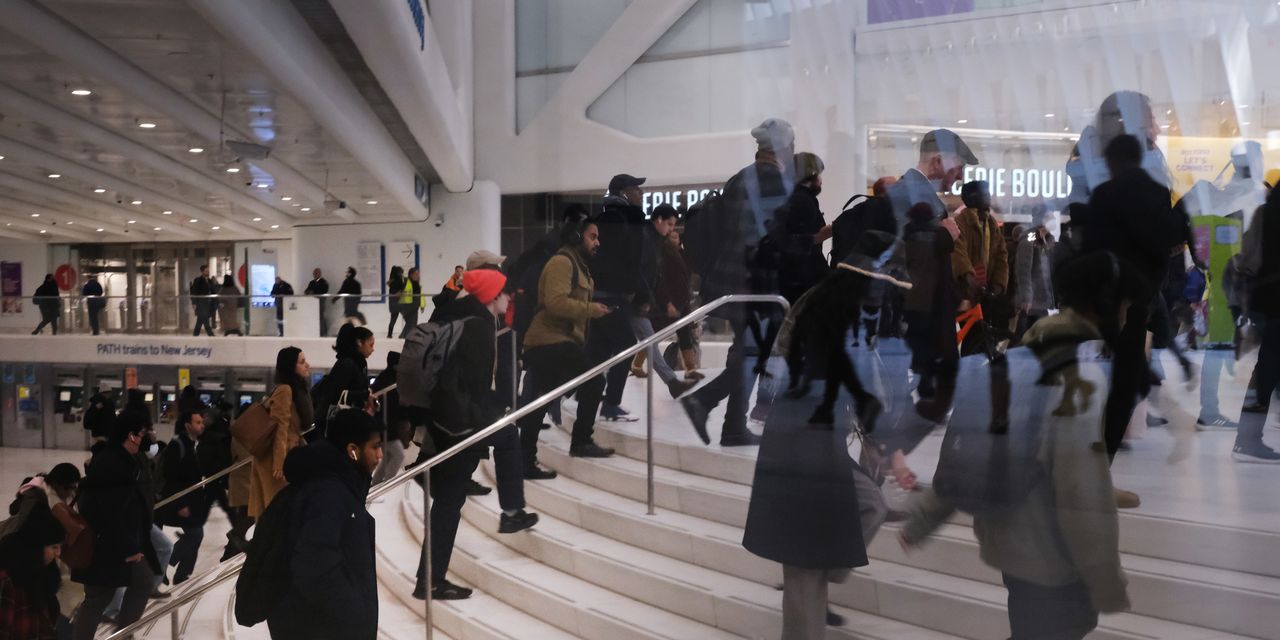As the fight between bosses and workers over returning to the office keeps entering new rounds, new data show how much in-office attendance ramped up last year — especially for white-collar workers with high levels of education.
Last year, 34% of employed people said they worked from home at least part of the time, according to the annual Bureau of Labor Statistics survey of how Americans spend their time.
That’s down from the 38% of employed people who said the same in 2021 — and a deeper look into Thursday’s data reveals an even more pronounced reduction in the number of people doing remote work among certain groups.
In 2022, for example, 54% of people with at least a bachelor’s degree said they did some of their work from home. In 2021, 60% of people in that group said the same.
When the pandemic shut down offices and other workplaces, people with higher levels of education often had greater chances of being able to stay home while they worked.
That dynamic is still at play now, although the differences between groups are becoming less stark. Last year and in 2021, the share of people with no college degree who said they worked from home at least some of the time stayed below 20%.
It’s unclear what was driving highly educated workers to spend more time in the office between 2021 and 2022, said Stephan Meier, a Columbia Business School professor who chairs the school’s management division. Some of it could be attributed to return-to-office policies, but it might also be due to growing comfort with vaccination and public-health measures as the pandemic continued, he said.
“What I would care about is who goes to the office and who doesn’t want to go to the office,” he said.
The overall change in numbers is not “a major shift,” said Meier, who teaches students and executives about the future of work. “What those numbers show to me is that the war on remote work is not over.”
The year-over-year decline fits with the trends that Nicholas Bloom, a professor of economics at Stanford University, is seeing in his own research analyzing where people say they are working these days. Even if there’s less remote work happening, Bloom said, his research shows the “rate of decline is itself declining.”
Bloom thinks the rate of remote work may bottom out next year. “I predict longer-run, from 2025 onwards, this will start to rise again as remote-work technology — hardware, software, [virtual reality, augmented reality], etc. — gets better and continues the long-run rise of [working from home].”
Between May and December 2020, Bureau of Labor Statistics research showed, 42% of employed people said they spent least some of their time working from home as COVID-19 upended daily life.
As a whole, Thursday’s numbers paint a picture of a slow return to the office — but not necessarily a return to the way things were before COVID-19.
Before the pandemic, 24% of workers said they spent some of their time working from home, according to the Bureau of Labor Statistics.
This year, office foot traffic has edged higher, but the rise is incremental and uneven. Earlier in June, average weekly office occupancy surpassed 50% for the first time in three months, according to an ongoing gauge from Kastle Systems, a security-technology provider.
One week later, the company’s barometer of average occupancy across 10 major cities dropped back below 50%. In the data from early June, Tuesdays tended to be the busiest days for offices, and Fridays were the slowest.
Meier said he wouldn’t be surprised if next year’s time-use study reveals even less time spent working from home. But this is a transitional moment in which businesses are figuring out the particular version of hybrid work duties and office setups that work for them, he said.
“Personally, I do think there is something magical about being in person. Does it need to be five days a week? Absolutely not.”
Read the full article here




